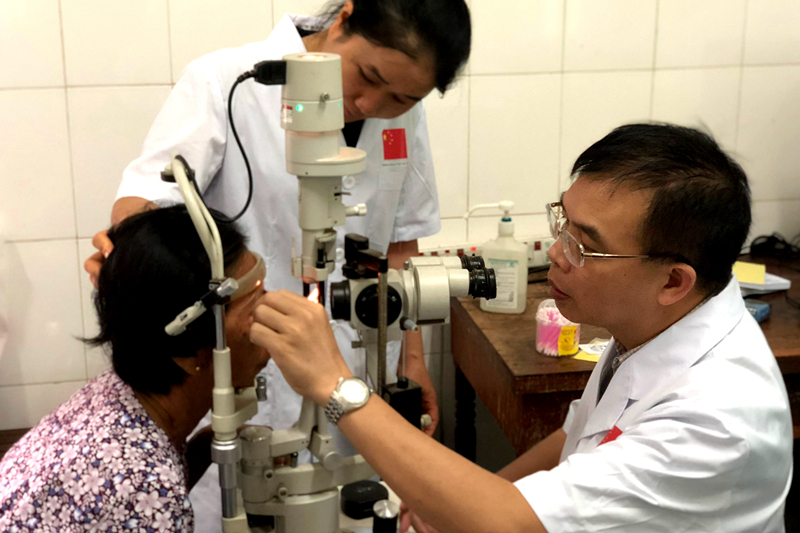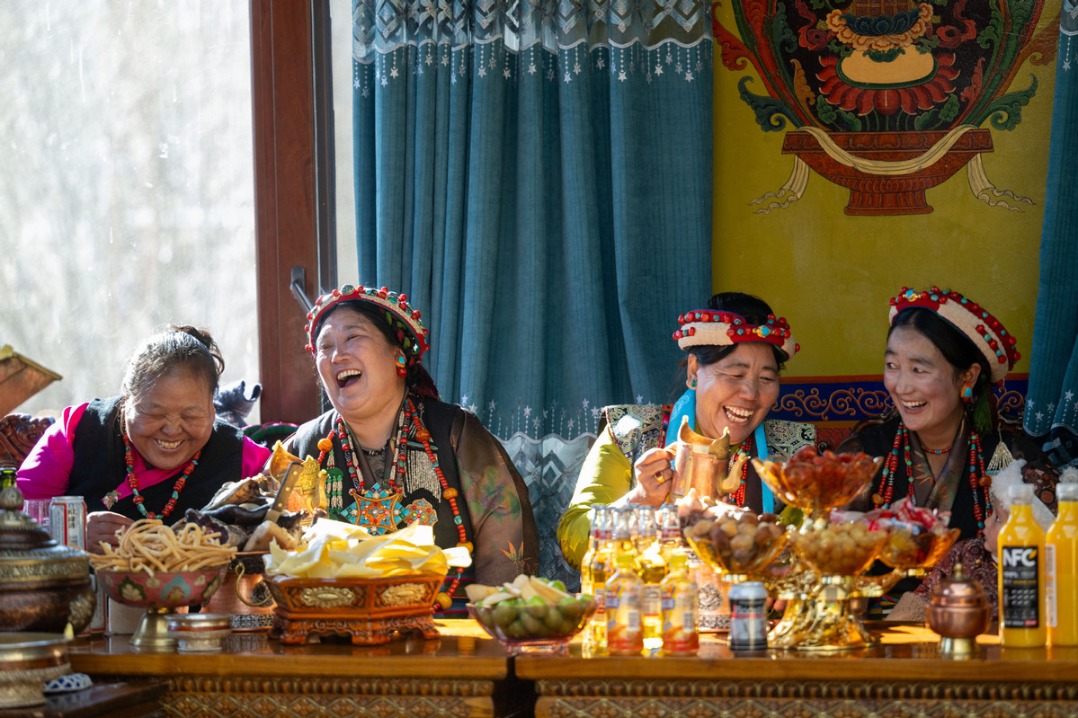Chinese medics offer vision of hope overseas


As a result, the condition is often left untreated, and as the cataracts worsen the patient usually experiences pain.
Om Saroeun used to work in a rice paddy, earning just enough to scrape by. Her plight is common in Kampong Cham, an agricultural area where 80 percent of residents are "peasant laborers" who grow rubber, rice, corn and other cash crops. When she lost her sight, Om Saroeun also lost her livelihood.
About 8,000 people in Kampong Cham have cataracts, but only about 300 operations to rectify the condition are performed at local hospitals annually.
In 2012, an official survey predicted that people ages 60 and older would account for 9.4 percent of Kampong Cham's population within five years, and the number would rise to 14.3 percent by 2030. The estimates point to a looming issue as a growing number of seniors lose their sight to cataracts every year.
Noting the gravity of the situation, Leung Chun-ying, the former chief executive of Hong Kong who is now a vice-chairman of the National Committee of the Chinese People's Political Consultative Conference, established a humanitarian project called The Belt and Road Cataract Blindness Eradication Campaign and asked eight medical professionals from Guangxi to join him.
The project, the first of its kind to pledge help for every cataract patient in Kampong Cham, required close collaboration between surgeons from Hong Kong and the Chinese mainland, the Cambodian Ministry of Health and the Chinese business community in Cambodia.
"Our medical team will stay until the last cataract patient has had surgery," said Leung, who wants to treat all 8,000 patients in Kampong Cham within the next 18 months.
Within three weeks of the campaign starting on May 17, the team from Guangxi had helped to restore the sight of more than 440 people in the province.
Operations, education
Om Saroeun's surgery was performed by Zeng Nairen, chief ophthalmologist at the People's Hospital of the Guangxi Zhuang Autonomous Region and lead surgeon of the visiting medical team.
Kampong Cham has a high incidence of cataracts, partly because it is home to the largest number of elderly residents among Cambodia's 24 provinces, and partly because most locals are not aware of the damage that results from long exposure to direct sunlight, Zeng said.
The local people not only fail to wear sunglasses, but actively object to them.
This bias was illustrated by Muth Koeung, 84, and her sister-in-law Chhim Sambath, 74, who both had cataracts for years.
When they applied for the cataract surgery program and were asked why they didn't wear sunglasses, the women chorused, "Sunglasses are for blind people."
Chen Lifei, an assistant surgeon with the Chinese team, said, "The locals think wearing sunglasses is bizarre, and the language difference means it's hard for us to educate them to wear sunglasses to protect their eyes."
During postoperative care, the medical team works hard to persuade the patients to wear sunglasses. Thanks to a combination of a few words of Khmer and large amounts of body language, the Chinese nurses eventually helped Muth Koeung and Chhim Sambath to understand the importance of wearing sunglasses.
- Kelsang Pedron: A Tibetan female pilot in the Chinese PLA Air Force
- China expands rural land contract extension pilot program
- Fiber chip thinner than a hair
- Ministry to optimize the structure and scale of university enrollment
- Why do China's cultural and creative products go viral?
- Aviation sci-fi park Nantianmen to open in 2027





































